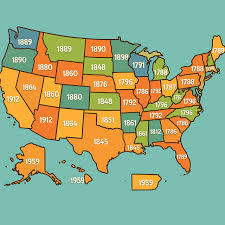
Introduction
The United States is made up of 50 states, each with its own unique characteristics, governance, and culture. Understanding US states is vital not only for grasping the political landscape of the country but also for appreciating its diverse demographics, economies, and regional challenges. As America navigates a rapidly changing world, the role of these states is increasingly relevant in discussions ranging from healthcare to climate policy.
Understanding the Structure and Role of US States
Each US state functions under its constitution, which governs its laws and regulations independently of the federal government to a significant extent. They hold power over a variety of policies, including education, transportation, and public safety. States can also enact their own legislation that may differ from federal law, such as laws surrounding marijuana legalization and immigration. This autonomy allows for a diverse range of policies and regulations tailored to the specific needs of their residents.
Demographics and Economy
The demographic makeup of each state varies greatly, impacting cultural practices, local economies, and political outlooks. For instance, states like California and Texas have large, diverse populations contributing to their significant economic outputs, while states like Wyoming tend to have smaller populations with economies based primarily on industries like mining and agriculture. Recent census data indicates population shifts, with many individuals moving from densely populated states to others that offer lower living costs or more desirable climates, such as Florida and Tennessee.
Current Events and Challenges
As of late 2023, US states are facing numerous challenges including economic recovery post-pandemic, resilience to climate change, and increasing political divisions. Many states have implemented innovative programs aimed at improving community health and environmental sustainability. For example, California continues to push for stringent emissions regulations, while Texas debates energy policy in light of extreme weather events that have plagued its infrastructure.
Conclusion
The significance of US states extends far beyond basic geography; they play crucial roles in shaping national policies and the American way of life. With ongoing demographic changes and evolving political dynamics, the states are adapting to meet both local and national challenges. As citizens, being informed about the roles and issues facing our states is essential, highlighting the importance of civic engagement and advocacy within our local communities. Understanding the trends and developments in US states will remain crucial as we head into an increasingly complex political future.
You may also like

Djibouti: A Strategic Gateway in East Africa

Recent Developments in British Columbia
